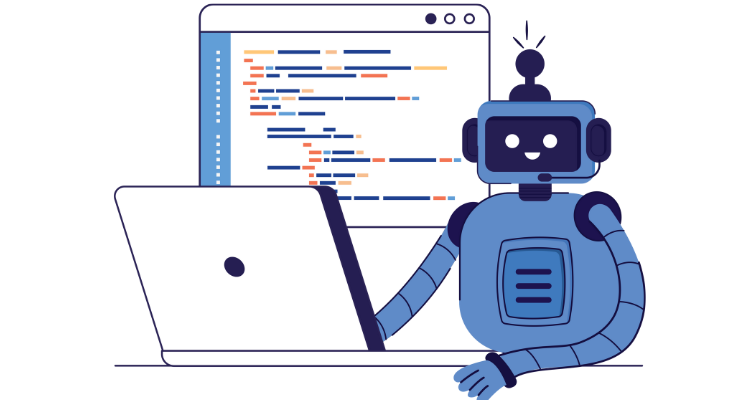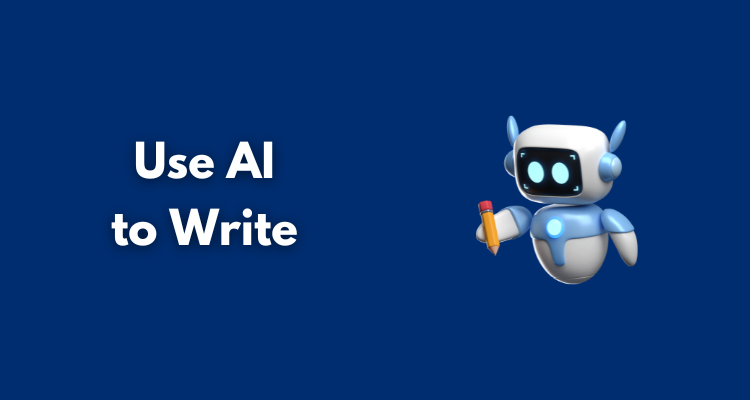Artificial intelligence is no longer science fiction. Today, many writers open a laptop, type a simple request, and watch paragraphs appear on the screen.
That magic feels even stronger when a platform such as Paperwriter handles the heavy lifting. In just seconds, the tool can outline an idea, fill in missing facts, and polish grammar. This guide explains how to use ai to write exceptional content without losing the human touch.
It shows what happens behind the scenes, shares easy tips, and warns about pitfalls. Every point is broken into small steps so that a busy blogger, a marketing team, or even a teacher can follow along.
By the end, any reader will understand where ai content writing fits in a normal workflow, how to pick the best ai content writing tool, and why editing still matters. Technology keeps growing fast, but smart writers grow with it. The pages ahead prove that thoughtful use of code and creativity can live in the same paragraph.
Table of Contents
ToggleWhat Is AI Content Writing?

Artificial intelligence content writing, often shortened to ai content writing, is the act of letting software produce text that sounds like it was drafted by a human. The program studies millions of published sentences, finds patterns, and then predicts which word should come next.
In simple terms, the machine guesses but with the memory of an encyclopedia. When a writer feeds a prompt such as “describe summer rain,” the system checks its data and forms a brand-new paragraph in seconds. This process differs from copying because the output is unique each time. Most platforms work in the cloud, so no special hardware is needed.
A phone, a tablet, or a basic laptop can handle the task. Because the engine keeps learning, it grows better with every prompt. Some companies add extra layers, like grammar filters or fact databases, to reduce errors. Together, these parts turn raw code into helpful ideas, outlines, and full articles.
Key Benefits of Using AI to Write
Every tool stays in a toolbox because it solves a problem. The same rule holds true for writing software.
- The first major benefit of using ai to write is speed. A single click can pull together an outline, a headline, and even a catchy callout in less than a minute.
- The second benefit is scale. Marketing teams can publish five blog posts a week instead of one, all without hiring extra staff.
- Third comes consistency. The model keeps tone, reading level, and brand words stable across dozens of drafts.
- Fourth, the cost stays low. Subscription fees for an ai content writing tool are often smaller than the hourly rate of a freelancer.
- Fifth, the platform never sleeps, so last-minute social posts can be formed at midnight or dawn.
- Finally, the technology sparks creativity. Fresh angles appear when the algorithm blends topics no human would think to join. Together, these perks make artificial intelligence a strong partner, not a rival.
Choosing the Right AI Content Writing Tool
Selecting software can feel like browsing a huge bookstore. Shelves look alike, yet each title hides different pages. When a team looks for an ai content writing tool, a simple checklist helps.
- The first box concerns accuracy. Does the system cite sources or check facts against current data?
- The second box reviews style settings. A good platform lets a user lock tone, preferred length, and reading level.
- The third box deals with integrations. Direct plugins for Google Docs, WordPress, or social dashboards save precious minutes.
- Price makes up the fourth area. Some providers sell seats, while others bill per word.
- A fifth point is support. Live chat, tutorials, and active forums show that the company cares. For large projects, many firms skip stand-alone apps and sign up for full ai content writing services that bundle training, custom templates, and analytics. No single solution wins every time; the “best” choice simply matches the goals, budget, and habits of the writers.
Planning Before Letting Technology Write

Even the smartest robot needs a roadmap. Before the first prompt is typed, a clear plan saves time and strengthens the final product. Writers often start with a simple outline: headline, subheads, main points, and call to action.
Next, they gather reliable sources. Feeding fresh facts into the model prevents stale ideas and old statistics. Third, they define the audience. A note like “middle-school students” or “busy sales managers” helps the engine pick short words or formal language. Fourth, they write seed sentences.
Each seed acts as a compass, guiding the ai content writing engine in the right direction. Finally, they set limits on length, tone, and brand phrases. When all these details sit in a brief, the machine produces cleaner text on the first try.
Planning may sound slow, yet it ends up faster than patching a messy draft. Preparation turns software into a partner that understands the assignment instead of a parrot that repeats random phrases.
Giving Clear Prompts and Instructions
Prompts are to artificial intelligence what steering wheels are to cars. A vague prompt like “write about dogs” sends the model in every direction.
A sharp prompt such as “write a 150-word paragraph on how guide dogs help blind students in class” keeps the engine on one road. Most experienced creators follow a pattern: context, format, length, style, and details.
For example, “Blog post intro, 7th-grade level, friendly tone, include example from a public school.” Each piece narrows the path. Adding keywords, dates, or must-use facts further shapes the copy. Some platforms allow variables, making it easy to repeat commands across many subjects.
Over time, writers store their best prompts in a shared document. This library grows into a private set of ai content writing recipes.
Clear instructions reduce rewrites, save tokens, and improve overall quality. In short, strong prompts give the engine confidence, and confident software returns sharper sentences.
Editing and Humanizing the Draft

Once the first draft appears, the real writing begins. Editors read the text aloud to catch odd rhythms or repeated words.
Next, they check facts. An AI can mix dates or confuse similar names, so a quick web search protects credibility.
Third, they look for emotional color. A short anecdote, a joke, or a local example turns plain information into a story.
Fourth, they cut filler. Phrases like “in order to” or “very unique” vanish.
Fifth, they add transitions, guiding readers from one idea to the next. Some teams use grammar checkers, but final judgment stays with a human eye. This step also smooths brand voice. A bubbly toy company needs different words than a formal law blog.
Finally, editors confirm the piece meets length rules, SEO goals, and ethical standards. With these touches, ai content writing feels natural. Readers may never notice the code behind the copy, and that is the true mark of success.
Integrating AI Content Writing Services with Workflow
Large organizations often juggle product pages, ads, and internal reports at the same time. To handle this load, many switch from single apps to full ai content writing services. These platforms connect idea generation, writing, editing, and publishing inside one dashboard.
The first integration point is the content calendar. Tasks flow from planning to drafting automatically, cutting silos between departments.
The second point is asset management. Finished articles drop into shared folders where designers, translators, and legal reviewers can comment.
Third, APIs link the service to custom software, letting developers pull fresh snippets into mobile apps or smart devices.
Fourth, built-in analytics track views, shares, and rankings, so leaders see return on investment without juggling extra spreadsheets.
Training modules serve as a fifth layer, teaching new hires how to craft prompts within minutes. By weaving technology through every stage, a company gains speed and clarity while still keeping final approval in human hands.
Avoiding Common Pitfalls
New tools can tempt writers to skip best practices.
- The first trap is plagiarism. While the algorithm usually crafts fresh text, small fragments may echo existing work. Running every draft through an AI checker guards against unintentional copying.
- The second trap is over-reliance. If humans stop thinking, bland and generic prose fills the page. A quick brainstorming session before each prompt keeps ideas original.
- Third comes data bias. The model reflects the internet it reads, and the internet holds errors and stereotypes. Editors must scan language for fairness and accuracy.
- Fourth, some teams forget to set voice guidelines, causing style drift across posts. A living style guide solves that issue.
- Fifth, many skip backup plans. Service outages do occur, so local writing tools or old-fashioned notebooks still matter.
By spotting these pitfalls early, a writer treats artificial intelligence like a helpful intern—talented but still needing guidance. Small fixes today prevent big headaches tomorrow.
Measuring Success and Improving Over Time
Success should never stay a mystery. After publishing, smart teams track key numbers to see whether their use of AI delivers real value.
The first metric is engagement: reads, likes, or time on page. A rise shows that the content speaks to its audience.
The second metric, conversion, measures how many readers click a link, sign up, or buy a product.
The third is search ranking. If posts climb toward page one, the prompts, keywords, and edits worked well.
Fourth, editors review qualitative feedback from comments or support tickets. Honest words reveal gaps no chart can show.
Fifth, workload stats matter. Counting hours saved by ai content writing compared with manual drafting proves return on investment. After data collection, teams adjust prompts, revise style guides, or swap tools.
In this cycle of measure, learn, and refine, the writing stays fresh and the technology keeps earning its place at the writer’s desk.









